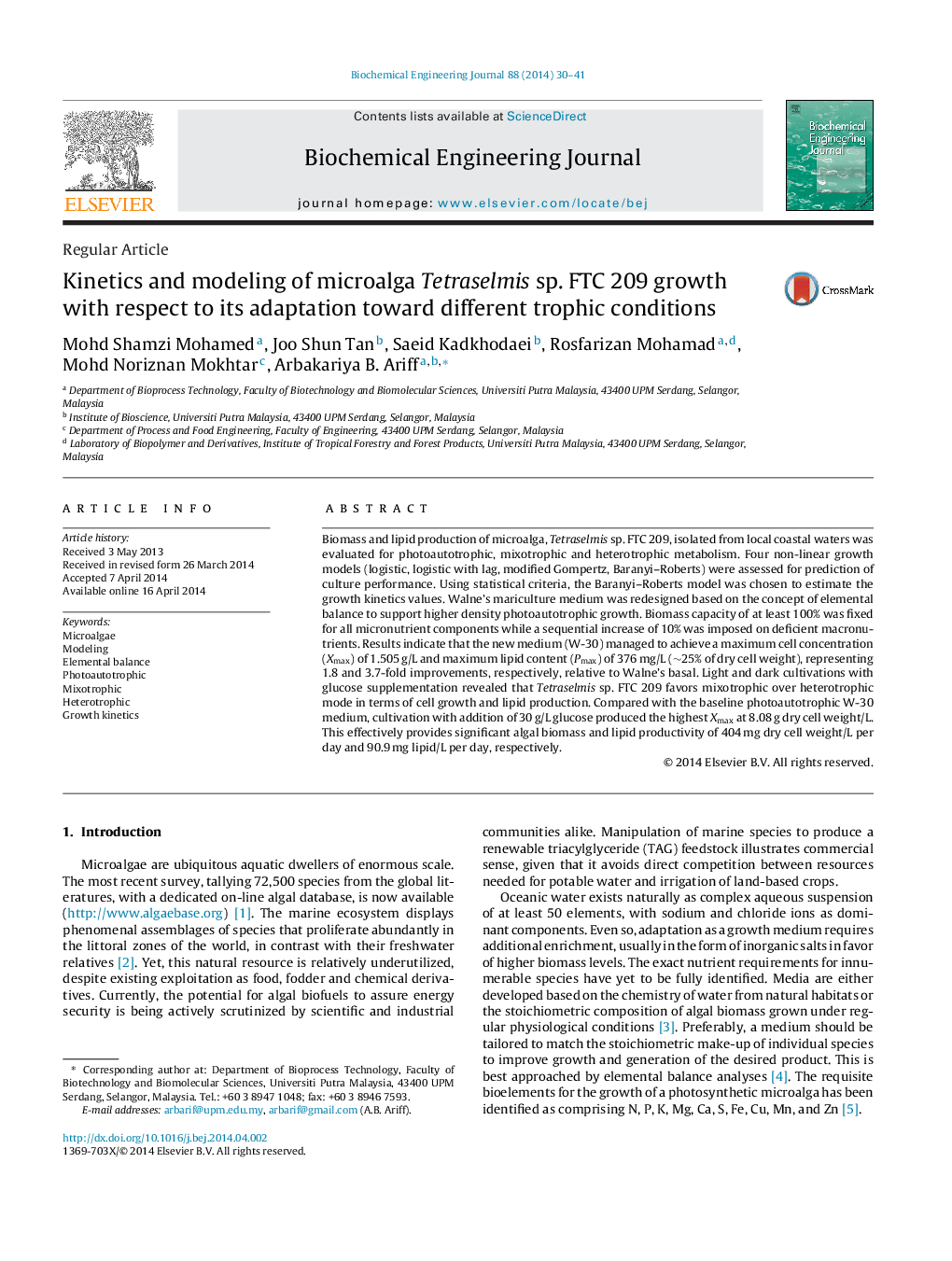| Article ID | Journal | Published Year | Pages | File Type |
|---|---|---|---|---|
| 3151 | Biochemical Engineering Journal | 2014 | 12 Pages |
•Baranyi–Roberts model was statistically accepted to estimate the algal kinetic parameter values.•Walne's medium was redesigned via elemental balance to support higher density autotrophic growth.•New W-30 medium achieved Xmax of 1.505 g/L and Pmax of 376 mg/L, a 1.8 and 3.7-fold over Walne's basal.•Tetraselmis sp. FTC 209 favors mixotrophic over heterotrophic for cell growth and lipid production.•W-30 medium added with 30 g/L glucose gave productivity of 404 mg dcw/L/day and 90.9 mg lipid/L/day.
Biomass and lipid production of microalga, Tetraselmis sp. FTC 209, isolated from local coastal waters was evaluated for photoautotrophic, mixotrophic and heterotrophic metabolism. Four non-linear growth models (logistic, logistic with lag, modified Gompertz, Baranyi–Roberts) were assessed for prediction of culture performance. Using statistical criteria, the Baranyi–Roberts model was chosen to estimate the growth kinetics values. Walne's mariculture medium was redesigned based on the concept of elemental balance to support higher density photoautotrophic growth. Biomass capacity of at least 100% was fixed for all micronutrient components while a sequential increase of 10% was imposed on deficient macronutrients. Results indicate that the new medium (W-30) managed to achieve a maximum cell concentration (Xmax) of 1.505 g/L and maximum lipid content (Pmax) of 376 mg/L (∼25% of dry cell weight), representing 1.8 and 3.7-fold improvements, respectively, relative to Walne's basal. Light and dark cultivations with glucose supplementation revealed that Tetraselmis sp. FTC 209 favors mixotrophic over heterotrophic mode in terms of cell growth and lipid production. Compared with the baseline photoautotrophic W-30 medium, cultivation with addition of 30 g/L glucose produced the highest Xmax at 8.08 g dry cell weight/L. This effectively provides significant algal biomass and lipid productivity of 404 mg dry cell weight/L per day and 90.9 mg lipid/L per day, respectively.
